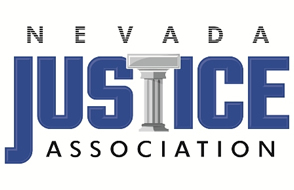![]() Back injuries, followed closely by shoulder injuries, are the most common job-related injuries for my clients in the nursing field. Nurses, and those employed as nursing attendants are at high risk for these injuries primarily because they must transfer patients from beds to gurneys or to wheel chairs, or to baths.
Back injuries, followed closely by shoulder injuries, are the most common job-related injuries for my clients in the nursing field. Nurses, and those employed as nursing attendants are at high risk for these injuries primarily because they must transfer patients from beds to gurneys or to wheel chairs, or to baths.
A new law in California requires hopsitals to establish a "safe patient handling policy", meaning that lifting devices must be used instead of manually lifting patients and that staff must be trained better. The Santa Cruz Sentinel.com reported that studies done by hospitals that had already established those policies in 2004 showed that the rate of injuries among nurses dropped 15%. Handling overweight patients was a particular concern as the population continues to be more obese.
Most hopsitals in Nevada have instituted training on how to transfer and move patients using correct body mechanics. The policy at each hospital may differ on when a nurse is required to use lift equipment. Prevention of these injuries is certainly the key to reducing the number of low back sprains, disc herniations, and back injuries in general that afflict workers in the nursing field. If your hospital does not have good patient lifting policies, you might want to speak to your supervisor or director to see what can be done to obtain new equipment or to get additional training to prevent future injury to yourself and your co-workers.
What if you are a nurse and you do hurt your lower back while transferring a patient? Follow all of the ordinary steps for filing a claim and getting medical care as directed by your employer. You should notifiy your nursing director or supervisor immediately in writing if you think you may have hurt your back, even if you don’t think you need to see a doctor right away. Many times a person may not know how serious the back injury is, thinking that they have a muscle strain that will feel better in a day or two. Report the injury anyway on a Notice of Injury form. The law requires injured workers to report injuries in writing within 7 days of the accident.
The law also requires that an injured worker obtain medical care within 90 days of the accident and complete the C-4 Claim for Compensation if the worker ever intends to pursue a claim. After you notify your employer of the incident causing you back pain, make sure that you go to the clinic where your employer directs you for a work-related injury once you realize that you need medical attention. Be clear on that form about the date you injured your back and how you injured it. Be as specific as possible about how the accident occurred. If you only think you might have injured it work, but aren’t sure about how and when you injured it, the claim will be denied. Remember, there is no claim until you complete the C-4 form at a doctor’s office.
Once the claim is accepted, if your back injury is not getting better following some physical therapy and anti-inflammatories, I recommend that you request a transfer of care from the intitial clinic to either a physiatrist or a spine specialist on your insurer’s provider list. You are entitled to ask your adjuster for a copy of the insurer’s provider list so that you may select a physiatrist, or an orthopedic physician, or a neurrosurgeon. Most back injuries will heal in time, but if yours requires surgery or is so debilitating that you may not be able to return to your profession in the nursing field, you may want to consider a consultation with an attorney to make sure you know your rights. A book that provides a good discussion of treatment options for low back injuries is Your Aching Back, by August A. White III, published by Simon and Shuster, and available at www. amazon.com.













